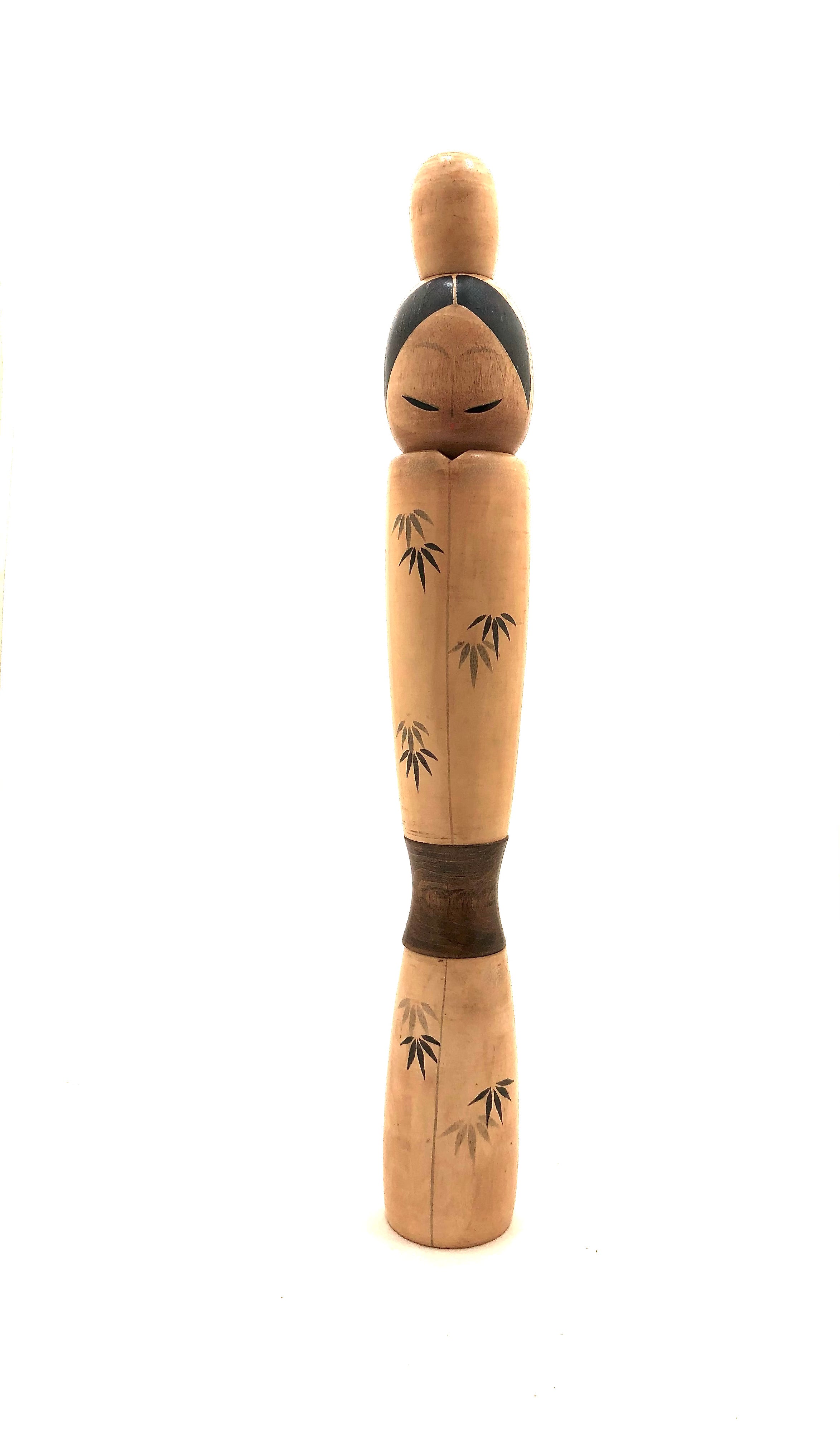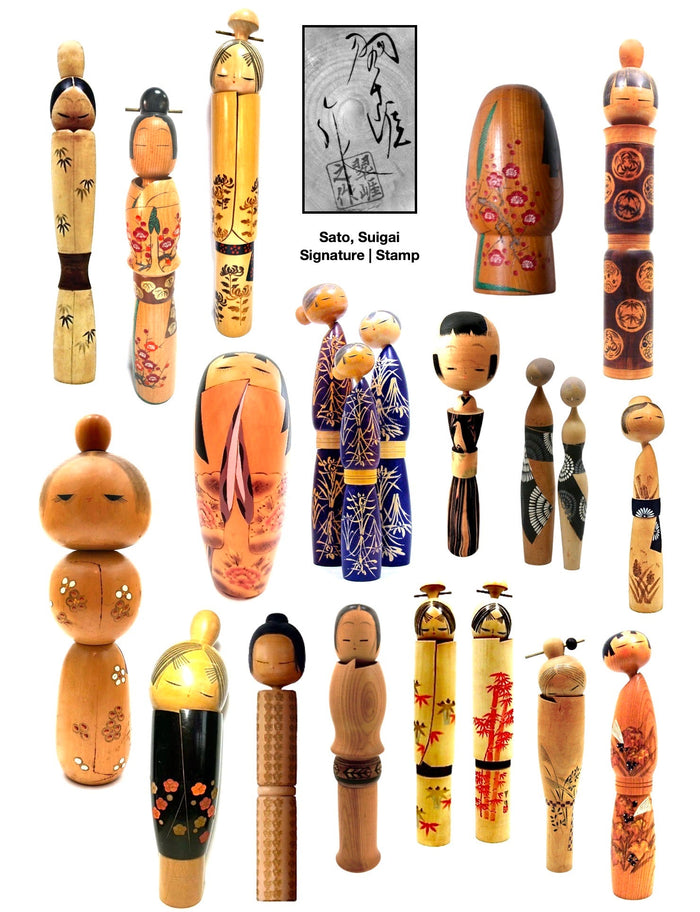

Vintage Sosaku Kokeshi Entitled, “Lovely Girl | Akai hana” by Sato Suigai
Dimensions: 18-0”h
The most unique feature of Sato-san’s dolls is the unusual but traditional hairstyle, and in this case, there is an overemphasized ‘Mage’ treatment of wrapped hair on top of the head and black bangs. The motif of this doll, being small, are grey and black bamboo leaves, disbursed throughout the body, with a sumi-e’ type of execution, symbolizing prosperity, purity, and innocence. The base wood is dogwood, (mizuki), and is left natural with a contrasting magnolia, (Mokuren), used to define the Obi. Her face is very serene as she looks downward, with a faint indication of eyebrows, nose and pink/red lips. The piece has a clean and simplified overall form. The doll is finished with a natural colored candle wax, (Rosoku no ro). The doll has the artist’s stamp and is signed on the bottom.
Condition: Excellent, original condition, with no fading or loss of color and consistent with age. The piece meets all the standards of collectible Folk Art.
NOTE: Sato Suigai, a painter of artistic works, began Kokeshi making in 1948, for which his dolls have won many awards, including the Prime Minister’s Award in 1966. In 1970, Sato-san’s artistry was recognized by Japan’s Imperial Family, Crown Prince Akihito, (Now Emperor Akihito), the Minister of Economy and Trade, and the Minister of Agriculture and Forestry.

Artisan
Woodworker: Sato, Suigai
1920-
Biographical History:
Sato-san, named Sadahachi, was born in Okubo, Yoshioka Village, Gunma Prefecture, to a family who owned a silk trading business. At the age of 18, he began his professional career as a painter under the famous artist Komuro, Suiun, before pursuing a career in creative Kokeshi making in 1946. Sato-san also pursued careers in fashion design, engineering, and mechanics. In 1970, he was recognized for his wood crafting skills and named Holder of Excellent Technique. His Kokeshi dolls have won many awards, including the Prime Minister’s Award in 1966. In 1970, Sato-san’s artistry was recognized by Japan’s Imperial Family, Crown Prince Akihito, (Now Emperor Akihito), the Minister of Economy and Trade, and the Minister of Agriculture and Forestry. He is a member of the Cultural Properties Protections Committee of Hakone.
Collector's note – descriptive qualities, standard characteristics & ornamentation styles:
What is unique to this artist’s dolls is the unusual but traditional hairstyle, the wheat, summer grass, bamboo, (symbolizing prosperity, purity, and innocence), plum blossoms, and abstract leaves. In many instances, he utilizes an uncolored wood obi on both plain and vividly colored Kimono. He additionally incorporated ‘Stilt grass’, which is most commonly found in moist areas of wetlands. He also enjoyed representing ‘Kyoho budo’, (giant mountain grapes). Occasionally he incorporated pine, plum, and bamboo, referred to as “sho-chiku-bai”. Sato-san created many wonderful simple forms. Sato-san also created several large forms decorated with the family crests, (Mon) that are very tall, made in two separate sections from the same piece of wood, and joined with a connecting dowel. He regularly captures a peaceful nature in his doll's faces, complementing the serene nature that fills the countryside.
